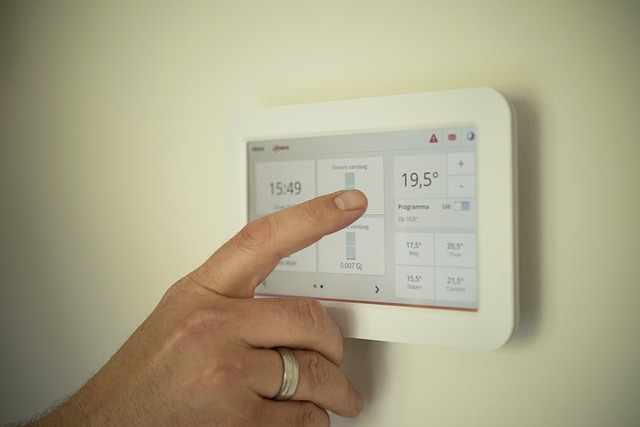Smart Thermostat Setup: How Installation May Improve Home Efficiency
Smart thermostats are designed to provide better control over heating and cooling while supporting energy efficiency. This guide explains how setup typically works, what systems are usually compatible, and the features that may help improve comfort and reduce unnecessary energy use.

How Smart Thermostats May Improve Household Energy Efficiency
Smart thermostats contribute to energy efficiency through several mechanisms that traditional thermostats cannot provide. These devices utilise advanced algorithms to learn your daily routines, automatically adjusting temperatures when rooms are unoccupied or during sleep hours. Many models can reduce heating and cooling costs by 10-15% annually through optimised scheduling and precise temperature control.
The technology integrates weather forecasting data to anticipate heating and cooling needs, preventing unnecessary energy consumption. Geographic and occupancy sensors detect when residents leave home, automatically switching to energy-saving modes. Some models provide detailed energy usage reports, helping homeowners identify patterns and opportunities for further efficiency improvements.
Smart thermostats also enable zone-based heating in compatible systems, allowing different areas of the home to maintain separate temperature settings. This targeted approach prevents wasting energy on unused spaces while ensuring occupied rooms remain comfortable.
Steps Typically Involved in Setting Up a Smart Thermostat
The installation process for smart thermostats generally follows a systematic approach, though complexity varies depending on existing wiring and system compatibility. Initial preparation involves switching off power to the heating and cooling system at the circuit breaker and removing the existing thermostat carefully to examine the current wiring configuration.
Most installations require identifying and labelling existing wires, typically including power, heating, cooling, and fan connections. Smart thermostats often need a continuous power supply, which older systems may lack, potentially requiring additional wiring or a power adapter installation.
The mounting process involves securing the new thermostat base to the wall, connecting wires according to manufacturer specifications, and attaching the display unit. Following physical installation, the setup process continues with connecting the device to your home’s WiFi network and downloading the associated smartphone application.
Configuration includes setting up user accounts, inputting heating and cooling system specifications, and establishing initial temperature preferences and schedules. Many devices offer guided setup processes that walk users through calibration and initial programming steps.
Key Features to Consider When Choosing a Smart Thermostat
Several important features distinguish different smart thermostat models, affecting both functionality and compatibility with existing heating systems. WiFi connectivity remains essential for remote control and software updates, while compatibility with voice assistants like Amazon Alexa or Google Assistant may appeal to users with existing smart home ecosystems.
Learning capabilities vary significantly between models, with some devices automatically creating schedules based on observed behaviour patterns, while others require manual programming. Geofencing technology allows thermostats to detect when residents approach or leave home, automatically adjusting settings accordingly.
Display quality and interface design affect daily usability, with options ranging from simple LED displays to full-colour touchscreens. Energy reporting features provide detailed consumption data, helping users understand heating and cooling patterns and identify efficiency opportunities.
System compatibility represents a crucial consideration, as some smart thermostats work only with specific heating types such as gas, electric, or heat pump systems. Multi-zone capability may be important for larger homes or those with complex heating systems requiring different temperature zones.
| Smart Thermostat Model | Provider | Key Features | Cost Estimation |
|---|---|---|---|
| Nest Learning Thermostat | Auto-learning, geofencing, energy reports | £200-250 | |
| Ecobee SmartThermostat | Ecobee | Room sensors, voice control, occupancy detection | £220-280 |
| Honeywell T6 Pro | Honeywell | Professional installation, robust scheduling | £150-200 |
| Tado Smart Thermostat | Tado | European compatibility, weather adaptation | £180-230 |
Prices, rates, or cost estimates mentioned in this article are based on the latest available information but may change over time. Independent research is advised before making financial decisions.
Professional Installation Versus DIY Approaches
Many homeowners can successfully install smart thermostats independently, particularly when existing wiring meets modern requirements and system compatibility exists. DIY installation typically requires basic electrical knowledge, proper tools, and careful attention to manufacturer instructions and safety protocols.
Professional installation becomes advisable for complex heating systems, homes lacking compatible wiring, or situations requiring additional electrical work. Certified technicians can assess system compatibility, install necessary supporting equipment, and ensure proper configuration for optimal performance.
The choice between professional and DIY installation often depends on comfort level with electrical work, system complexity, and local building regulations. Some manufacturers offer installation services or partnerships with local technicians, providing middle-ground options for homeowners seeking professional support.
Smart thermostats offer compelling opportunities for improving home energy efficiency through intelligent automation and precise temperature control. Success depends on choosing compatible devices, following proper installation procedures, and taking advantage of available features such as scheduling, geofencing, and energy monitoring. Whether installed professionally or independently, these devices can contribute meaningfully to reduced energy consumption while maintaining comfortable living conditions throughout the year.




